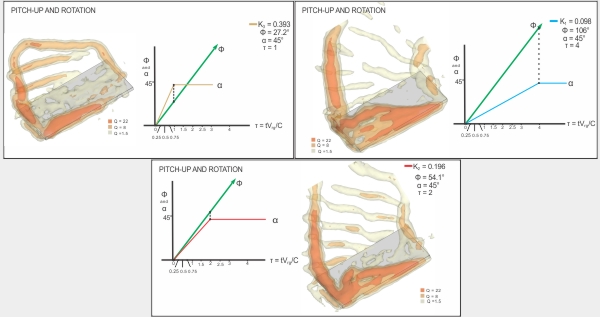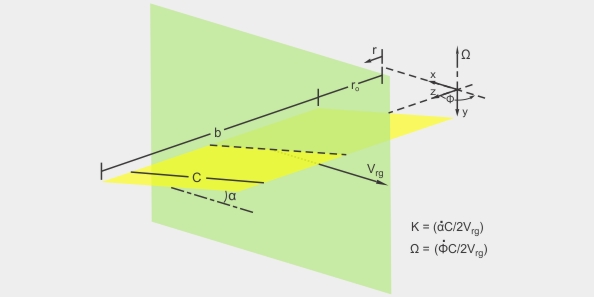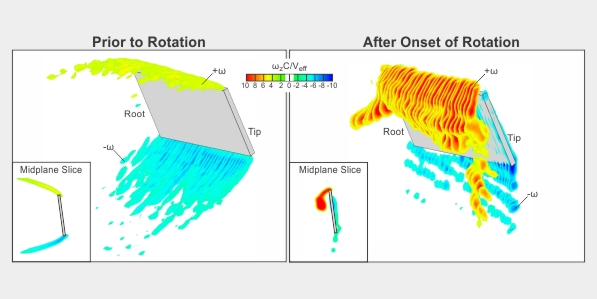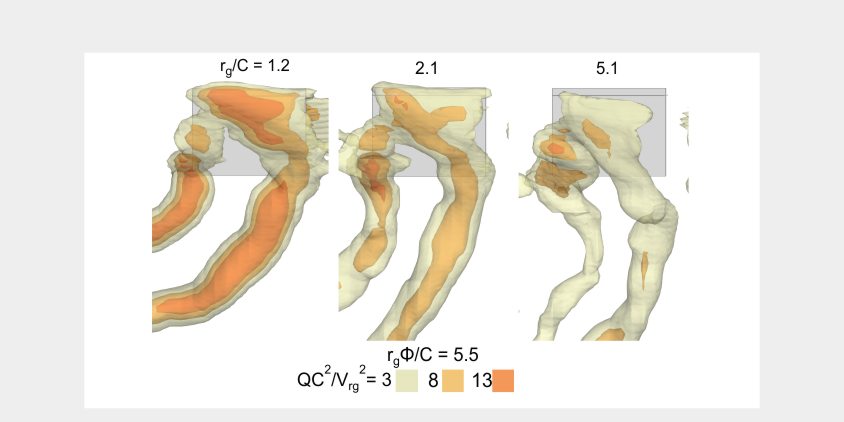Simultaneous Pitch-Up and Rotation Maneuvers: The present investigation focusses on the detailed flow structure along a low aspect ratio wing undergoing a prevalent combination of motions, i.e., combined pitch-up and rotation, in comparison with simple pitch-up and pure rotation. Of particular interest is the effect of rotation on the evolution of the flow structure induced by pitch-up motion. Quantitative imaging is employed to characterize the detailed three-dimensional flow structure.
The pitch-up motion of a wing is a classic maneuver that gives rise to a large-scale leading-edge vortex, which moves away from the wing and in the downstream direction with increasing time. If the wing has a small aspect ratio, formation of the leading-edge vortex takes the form of an arch vortex, and at the plane of symmetry of the wing, the large-scale vortex rapidly departs from the leading-edge. It is demonstrated herein that the nature of the pitch-induced vortex at the leading-edge is fundamentally altered in presence of wing rotation. That is, the leading-edge vortex remains at, and close to, the surface of the leading-edge of the wing with the addition of rotation.
Principal Investigators: M. Bross and D.R.T. Smith




